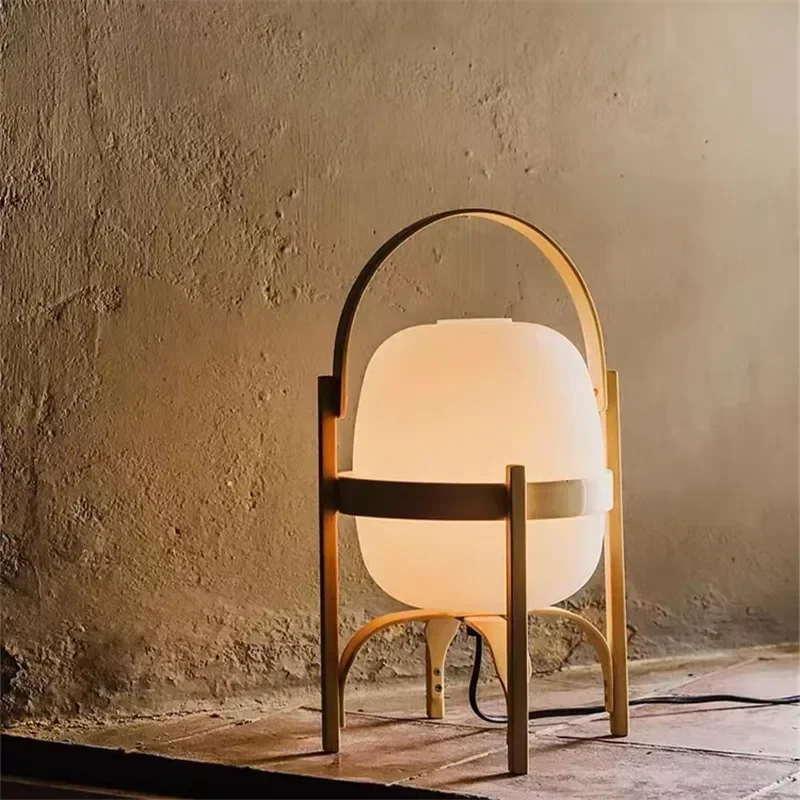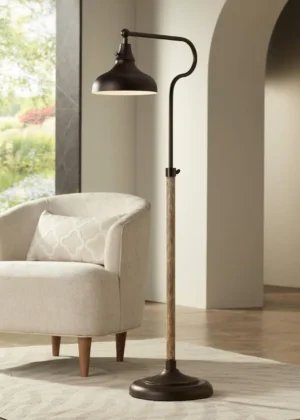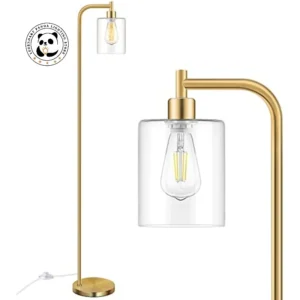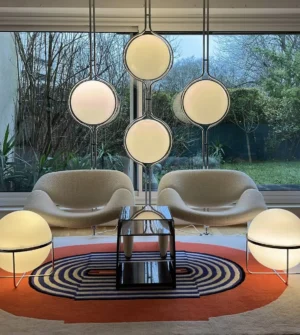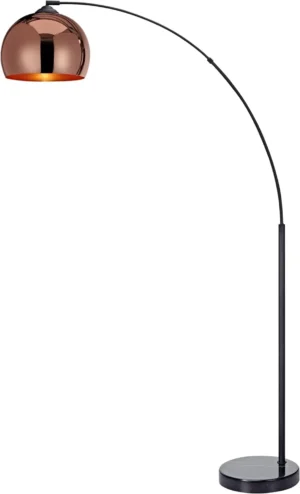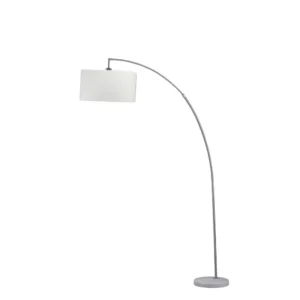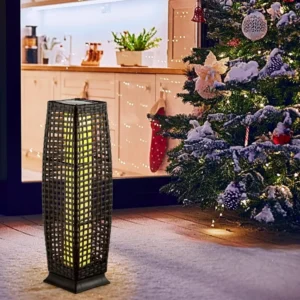Introduction: Understanding Modern Lighting Technologies
When it comes to illuminating our homes and workspaces, lighting technology has come a long way from the basic incandescent bulb. Today, two major lighting technologies stand at opposite ends of the spectrum: traditional arc lamps that have illuminated our world for decades and LED (Light Emitting Diode) technology that has revolutionized modern lighting solutions.
These lighting technologies differ fundamentally in how they generate light, their efficiency, lifespan, and various other performance characteristics. For homeowners, designers, and businesses alike, understanding these differences is crucial for making informed decisions about lighting investments.
The lighting industry has witnessed a significant transformation over the past decade, with LED technology capturing over 60% of the global lighting market. This shift reflects changing priorities in energy efficiency, environmental impact, and lighting quality demands.
As we explore the contrast between LED and traditional arc lamps, we’ll examine their technical foundations, performance metrics, practical applications, and cost implications to help you navigate the elegant lighting solutions for modern interiors available today.
What Are Traditional Arc Lamps?
Traditional arc lamps represent one of the earliest forms of electric lighting, operating on a principle that has remained largely unchanged for over a century. At their core, these lamps generate light through an electric arc—essentially a sustained electrical discharge—between two electrodes.
When electricity jumps across the gap between electrodes, it creates an intensely bright plasma discharge that produces light. This process occurs within a sealed glass tube containing specific gases or metal vapors that influence the light’s characteristics.
The main types of arc lamps include:
- Mercury vapor lamps: Containing mercury that emits bluish-white light and some ultraviolet radiation
- Metal halide lamps: Adding metal salts to mercury vapor to produce whiter, more balanced light
- Xenon arc lamps: Using xenon gas to create light that closely resembles daylight, often used in movie projectors and specialized applications
- Carbon arc lamps: The oldest type, using carbon electrodes that gradually burn away (historically used in streetlights)
These traditional lighting systems became commercially widespread in the early 20th century, dominating applications from street lighting to theater spotlights. While innovative for their time, they come with inherent limitations including high heat generation, substantial power requirements, and relatively short operational lives.
For those concerned about durability, understanding the lifespan of arc lamp technologies becomes particularly important when weighing lighting options.
What Are Light Emitting Diodes (LEDs)?
Light Emitting Diodes, commonly known as LEDs, represent a fundamentally different approach to light generation. Unlike the heated gases or vapor of arc lamps, LEDs are solid-state devices that produce light through a phenomenon called electroluminescence.
At the heart of every LED is a semiconductor material (typically aluminum-gallium-arsenide) with a p-n junction—where two differently treated materials meet. When electrical current passes through this junction, electrons release energy in the form of photons, or light particles. This direct conversion from electricity to light happens with minimal heat generation.
The basic components of an LED include:
– Semiconductor chip (the light-producing element)
– Reflector cup that directs the light
– Wire bond connections
– Protective epoxy lens/encapsulation
LED technology has evolved dramatically since its inception. The first LEDs created in the 1960s produced only red light and were used mainly as indicator lights in electronics. Through subsequent decades, researchers developed LEDs capable of emitting different colors, culminating in the creation of efficient blue LEDs in the 1990s—the breakthrough that eventually enabled bright white LED lighting.
Modern LED lighting solutions typically use arrays of multiple small LEDs working together, or phosphor coatings that convert blue LED light into a full spectrum white light. This modular approach offers unprecedented flexibility in lighting design and functionality.
For homeowners looking to modernize their living spaces, the ultimate guide to LED arc floor lamps provides comprehensive insights into how this technology has transformed traditional lamp designs.
Key Performance Metrics: Comparing LEDs and Arc Lamps
When evaluating lighting technologies, several key metrics determine their performance and suitability for different applications. The following table provides a comprehensive comparison between LED and traditional arc lamp technologies:
| Performance Metric | LED Technology | Traditional Arc Lamps |
|---|---|---|
| Energy Efficiency | 80-160 lumens/watt | 35-100 lumens/watt |
| Average Lifespan | 25,000-50,000+ hours | 2,000-20,000 hours |
| Initial Cost | Higher | Lower |
| Operational Cost | Much lower | Higher |
| Warm-up Time | Instant on | 2-10 minutes |
| Heat Generation | Low | Very high |
| Dimmability | Excellent (0-100%) | Limited (50-100%) |
| Environmental Impact | No hazardous materials | Contains mercury in many types |
| Size & Form Factor | Highly flexible, compact | Bulky, fixed shapes |
| Control Precision | High | Limited |
These metrics provide a foundation for understanding the significant differences between these lighting technologies. The capability for precise control is particularly important in modern lighting design, with many dimmable features in modern arc lamps enhancing both functionality and ambiance in contemporary spaces.
Energy Efficiency and Power Consumption
One of the most compelling advantages of LED technology is its superior energy efficiency compared to traditional arc lamps. While a typical metal halide arc lamp might produce 65-100 lumens per watt, modern LEDs regularly achieve 120-160 lumens per watt—sometimes even higher in the latest designs.
This efficiency difference stems from fundamentally different light production methods. Arc lamps lose substantial energy as heat—often converting only 20-30% of electrical energy into visible light. In contrast, LEDs convert 80-90% of their energy into light, with minimal heat wastage.
To put this in practical terms: replacing a 400-watt metal halide arc lamp with an equivalent LED system typically requires only 120-150 watts of power while producing the same or better illumination. This represents energy savings of 60-70%.
Over time, LED efficiency has continued to improve through technological advances. Early commercial LED fixtures might have operated at 50-60 lumens per watt, while current technology has more than doubled that performance—with laboratory prototypes achieving over 200 lumens per watt.
For those interested in reducing their environmental footprint and utility bills, energy-efficient arc floor lamps provide excellent options that maintain style without sacrificing performance.
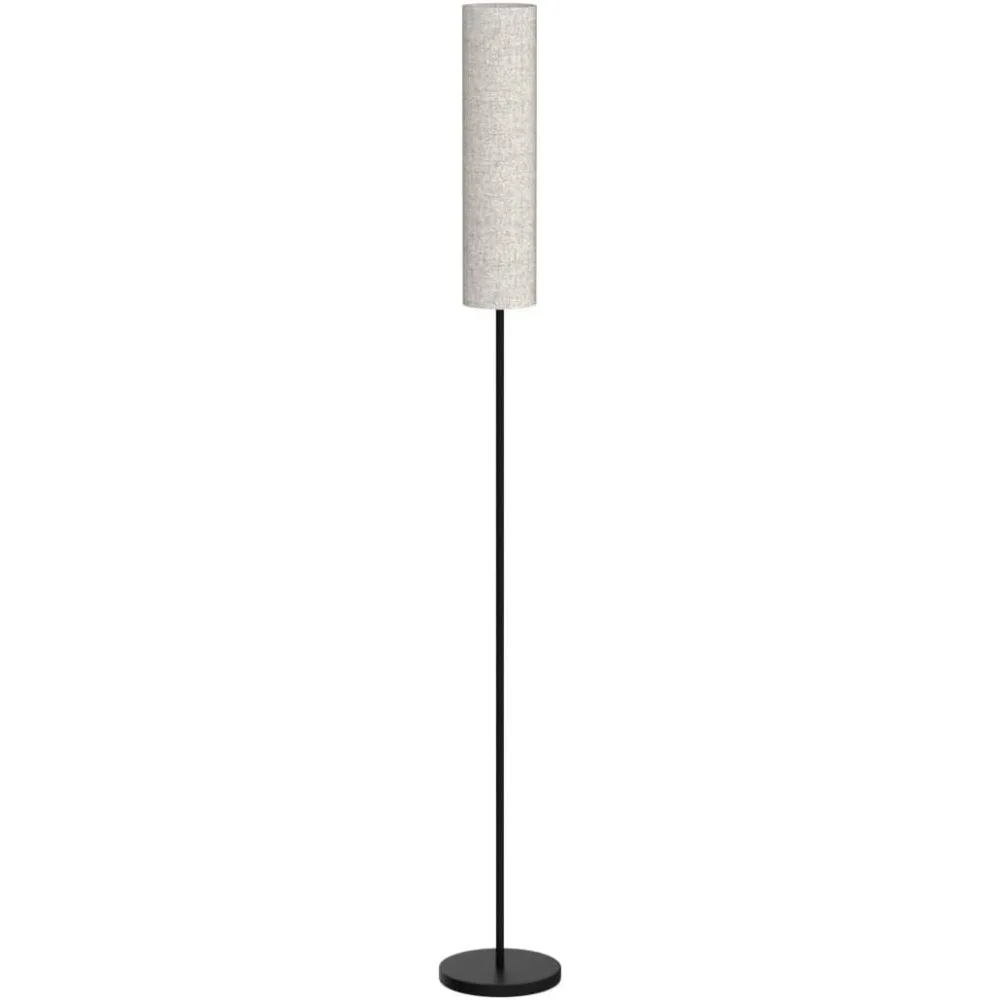
Lifespan and Durability
The durability difference between LED and arc lamp technologies represents one of the most significant contrasts between these lighting systems. LED lighting systems typically last between 25,000 and 50,000 hours of operation, with some premium products rated for up to 100,000 hours. In contrast, traditional arc lamps have much shorter lifespans:
- Mercury vapor lamps: 10,000-24,000 hours
- Metal halide lamps: 6,000-20,000 hours
- Xenon arc lamps: 500-2,000 hours
- Carbon arc lamps: Several hundred hours before electrode replacement
Beyond raw numbers, the failure modes differ substantially. Arc lamps tend to fail catastrophically—the lamp simply stops working, often with little warning. LEDs, however, experience gradual lumen depreciation, typically maintaining at least 70% of their original brightness throughout their rated lifetime.
On/off cycling also affects each technology differently. Arc lamps suffer significantly reduced lifespans when frequently switched on and off, as thermal stress during startup damages components. Each start/stop cycle can equal many hours of operational wear. LEDs experience minimal degradation from switching, making them ideal for motion-sensing and intermittent-use applications.
The solid-state nature of LED lighting also provides greater physical durability. With no filaments, electrodes, or glass tubes to break, LED fixtures can withstand vibration and impact that would destroy traditional arc lamps.
For those seeking lighting solutions with exceptional longevity, our collection of LED arc floor lamp options offers designs built to provide years of reliable illumination.
Light Quality and Spectral Characteristics
The light quality produced by LEDs versus traditional arc lamps differs significantly in several important aspects. Arc lamps typically generate light across a broad continuous spectrum, similar to sunlight, with particular intensity spikes at certain wavelengths based on the gases or metals used. This can result in excellent color rendering but sometimes with unwanted ultraviolet or infrared radiation.
LEDs, by contrast, initially produce light in a narrow wavelength band. White LEDs typically use either RGB (Red-Green-Blue) combinations or, more commonly, blue LEDs with yellow phosphor coatings to create white light. The resulting spectral output can be highly engineered for specific applications.
Color rendering index (CRI)—a measure of how accurately a light source reveals colors—shows interesting contrasts:
- High-quality LEDs: 80-98 CRI
- Metal halide arc lamps: 65-92 CRI
- Mercury vapor lamps: 15-55 CRI
- Xenon arc lamps: 95+ CRI
Color temperature stability represents another significant difference. Traditional arc lamps often shift color temperature as they age or when dimmed, while quality LEDs maintain consistent color output throughout their lifespan and across different brightness levels.
Regarding ultraviolet and infrared emissions, many arc lamp types produce significant amounts of both, requiring filters for sensitive applications. LEDs produce negligible UV and minimal IR radiation, making them safer for light-sensitive materials and reducing heat transfer to illuminated objects.
For interior designers and homeowners exploring how these lighting technologies can enhance living spaces, modern style LED arc lighting ideas showcase innovative applications that leverage the superior spectral characteristics of LED technology.
Heat Management Requirements
Heat management represents one of the most significant operational differences between LED and traditional arc lamp technologies. Arc lamps generate enormous heat during operation—surface temperatures can reach 500-1000°F (260-538°C) for the lamp envelope, necessitating careful fixture design and installation clearances to prevent fire hazards.
In contrast, while LEDs do produce heat, they generate far less—typically operating at 185-250°F (85-120°C) at the junction point, with much lower external temperatures. This fundamental difference impacts:
- Fixture design and materials
- Installation requirements
- Energy consumption
- Climate control costs
- Light output stability
Traditional arc lamps require specialized heat-resistant materials, extensive heat sinks, and sometimes forced air or liquid cooling systems. Many designs incorporate cooling fans that create noise and represent additional failure points. The high heat also accelerates the degradation of fixture components and can damage nearby heat-sensitive materials.
The heat from traditional arc lamps contributes significantly to building cooling loads. Large installations like retail spaces or offices using arc lamp technology may require 20-30% additional HVAC capacity compared to equivalent LED lighting systems—representing a hidden operational cost beyond direct electricity consumption.
For those seeking lighting solutions with minimal heat output, our dimmable arc floor lamp collection includes designs that remain cool to the touch even after hours of operation.
Control Capabilities and Response Time
The responsiveness and control capabilities of lighting technologies significantly impact both user experience and energy efficiency. LED lighting offers vastly superior control capabilities compared to traditional arc lamps:
LED lighting turns on instantly at full brightness, while arc lamps require warm-up periods ranging from 2 minutes (for some metal halide lamps) to 10+ minutes for mercury vapor lamps to reach full output. During this warm-up phase, arc lamps consume full power while delivering reduced light output.
Dimming capabilities show even greater contrast. Quality LED systems can dim smoothly from 100% down to 0%, maintaining color consistency throughout the range. Traditional arc lamps typically cannot dim below 50% without becoming unstable or shifting dramatically in color temperature, with some types unable to dim at all without specialized and expensive equipment.
Color tuning represents a revolutionary capability unique to LED technology. Modern RGB+W LED systems can produce millions of colors and shift white light from warm (2700K) to cool (6500K) tones, enabling dynamic lighting environments impossible with fixed-spectrum arc lamps.
Smart control integration favors LED technology. The instant response, digital controllability, and low-voltage compatibility of LEDs make them ideal for integration with smart home systems, occupancy sensors, daylight harvesting systems, and other advanced controls that can further reduce energy consumption by 30-60%.
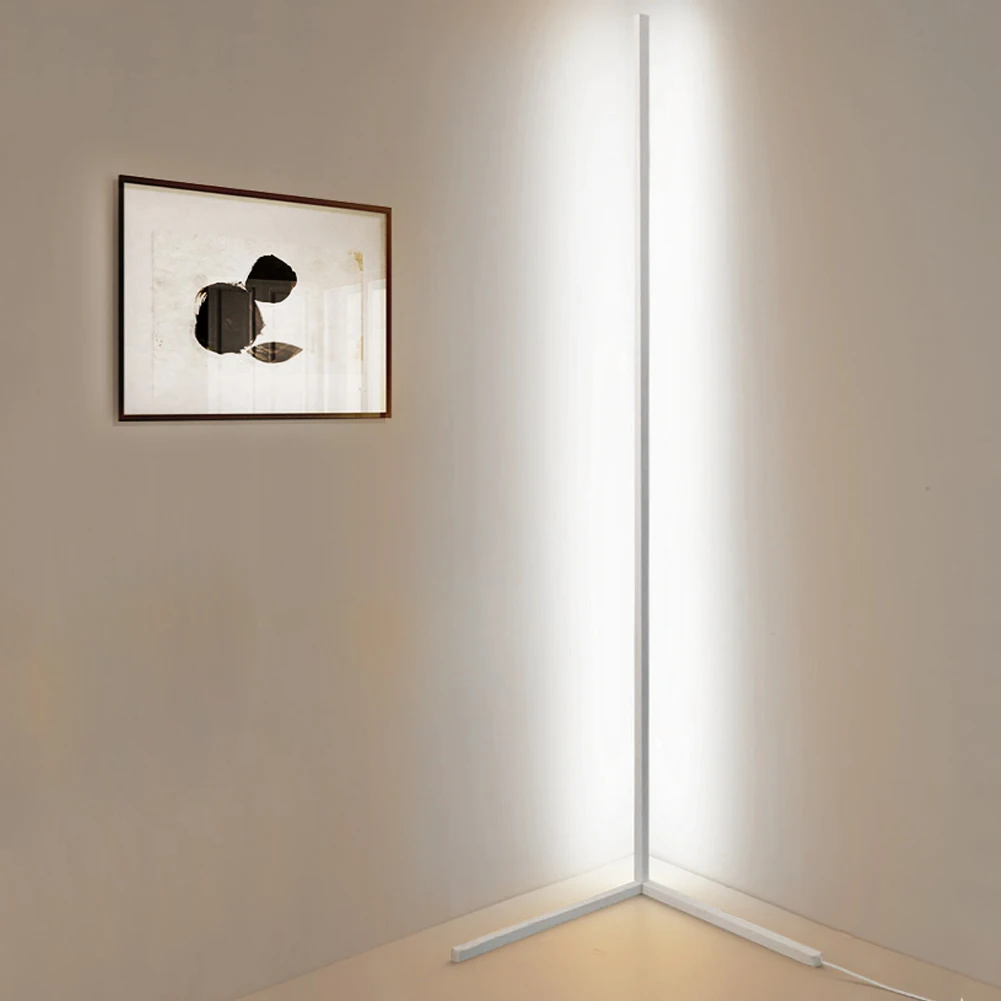
Initial vs. Long-Term Cost Analysis
Understanding the complete financial picture of lighting technologies requires examining both initial and long-term costs. While LED lighting typically comes with a higher purchase price, the total cost of ownership analysis reveals a different story over time.
Initial purchase costs:
– Traditional arc lamp fixtures: $80-300
– Replacement arc lamp bulbs: $30-150
– Comparable LED fixtures: $150-500
However, this comparison only tells part of the financial story. When calculating total ownership costs over a 10-year period for a typical floor lamp used 5 hours daily, the numbers reveal significant differences:
| Cost Factor | Traditional Arc Lamp | LED Lighting |
|---|---|---|
| Initial purchase | $250 | $400 |
| Replacement bulbs | $300 (5-6 replacements) | $0 (no replacements needed) |
| Energy cost (10 years) | $876 (300W × 18,250 hrs × $0.16/kWh) | $292 (100W × 18,250 hrs × $0.16/kWh) |
| Total 10-year cost | $1,426 | $692 |
This example shows LED technology costing less than half the total expense of arc lamp technology over a decade, with the break-even point typically occurring between 1-3 years depending on usage patterns and electricity costs.
For commercial applications with longer daily operation hours, the savings become even more dramatic, with payback periods sometimes measured in months rather than years.
For those looking to make wise long-term lighting investments, our contemporary arc floor lamp collection features designs that balance aesthetics with financial sensibility.
Environmental Considerations
The environmental impact of lighting choices extends beyond energy consumption to include manufacturing processes, materials used, and end-of-life disposal considerations. Traditional arc lamps contain several environmentally problematic components:
- Mercury content: Most arc lamp types contain mercury (5-50mg per lamp), classified as hazardous waste requiring special disposal procedures
- Other metals: Some contain lead, sodium, and other potentially toxic materials
- UV radiation: Unfiltered arc lamps emit ultraviolet radiation that can damage materials and potentially harm skin and eyes
- Ozone generation: Some high-intensity arc lamps produce ozone during operation
LED lighting, while not perfect, offers significant environmental advantages:
– No mercury or other hazardous gases
– Lower resource utilization due to longer lifespan
– Reduced carbon footprint from lower energy consumption
– No UV or IR radiation in the light beam
– No ozone production
Proper disposal requirements highlight these differences. Arc lamps must be treated as hazardous waste in most jurisdictions, with specific collection and processing requirements. While LED fixtures do contain electronic components that benefit from proper e-waste recycling, they don’t require the specialized hazardous waste handling of mercury-containing arc lamps.
Carbon footprint analysis shows that over its lifetime, an LED lamp might prevent 1-2 tons of carbon dioxide emissions compared to an equivalent arc lamp, primarily through reduced electricity consumption.
Understanding the essential LED arc lamp features that contribute to environmental sustainability can help guide eco-conscious lighting decisions.
Specialized Applications: Where Each Technology Excels
While LED technology has captured much of the lighting market, both LEDs and arc lamps have specific applications where their unique characteristics provide advantages.
Applications where LED technology excels:
- General illumination: Offices, homes, retail spaces benefit from LED’s efficiency, long life, and low maintenance requirements
- Architectural and decorative lighting: The compact size, design flexibility, and color options make LEDs ideal for creative lighting designs
- Smart and connected lighting: LEDs integrate seamlessly with control systems, sensors, and smart home platforms
- Heat-sensitive environments: Museums, food display areas, and electronics facilities benefit from LED’s low heat emission
- High-vibration environments: Transportation, industrial, and outdoor settings leverage LED’s solid-state durability
- Battery-powered applications: Portable lights, emergency lighting, and off-grid systems benefit from LED’s high efficiency
Applications where arc lamp technology maintains advantages:
- Ultra-high output point sources: Some scientific instruments, certain projectors, and specialized medical equipment still use arc lamps for their intense focused output
- Specific spectrum requirements: Some legacy scientific and medical equipment calibrated for particular arc lamp spectra
- Very high temperature environments: Specialized industrial settings where arc lamps’ heat tolerance provides advantages
- Legacy compatibility: Existing systems designed specifically around arc lamp specifications
The decision between technologies often depends on specific requirements for light quality, control needs, and operational conditions. For residential and most commercial applications, LED technology now offers superior performance across most metrics.
For those exploring specialized lighting solutions, our adjustable arc floor lamp collection offers versatile options suitable for various applications.
Adjustable Arc Floor Lamp, Bronze Arc Floor Lamp
Price range: $440.95 through $558.52 Select options This product has multiple variants. The options may be chosen on the product pageBrass Arc Floor Lamp, Contemporary Arc Floor Lamp, LED Arc Floor Lamp
Price range: $490.72 through $522.04 Select options This product has multiple variants. The options may be chosen on the product pageChrome Arc Floor Lamp, LED Arc Floor Lamp
Price range: $304.95 through $1,210.40 Select options This product has multiple variants. The options may be chosen on the product pageContemporary Arc Floor Lamp, Large Arc Floor Lamp, Marble Base Arc Floor Lamp
$224.94 Select options This product has multiple variants. The options may be chosen on the product pageContemporary Arc Floor Lamp, Silver Arc Floor Lamp
$459.99 Select options This product has multiple variants. The options may be chosen on the product pageLED Arc Floor Lamp, Rattan Arc Floor Lamp
$313.58 Select options This product has multiple variants. The options may be chosen on the product page
How to Choose the Right Lighting Technology for Your Needs
Selecting between LED and traditional arc lamp technology requires evaluating several key factors specific to your application. Consider these questions when making your lighting decision:
Primary Lighting Objective
– Do you need general ambient lighting or task-specific illumination?
– Is decorative appeal or pure functionality your priority?
– Do you require specific light quality for art display, photography, or detailed work?
Energy and Environmental Priorities
– How important is energy efficiency in your decision?
– Do you have sustainability goals that influence your lighting choices?
– Are disposal considerations important in your context?
Budget Considerations
– Are you focused primarily on initial purchase cost or long-term operational expenses?
– What is your expected usage pattern (hours per day) for this lighting?
– Is maintenance accessibility or frequency a concern?
Light Quality Requirements
– Do you need specific color rendering capabilities for your application?
– Is consistent color temperature important throughout the fixture’s lifetime?
– Do you require tunable white light or color-changing capabilities?
Control Capabilities
– Do you need instant-on functionality or is warm-up time acceptable?
– Will the lights be frequently switched on/off or dimmed?
– Do you plan to integrate the lighting with smart home or building management systems?
For most modern applications, LED technology provides the best balance of performance, efficiency, and features. However, certain specialized uses might still benefit from traditional arc lamp technology in specific circumstances.
Interior designers and homeowners can explore practical applications in our guide to LED arc floor lamps for home lighting for inspiration on integrating advanced lighting technology into living spaces.
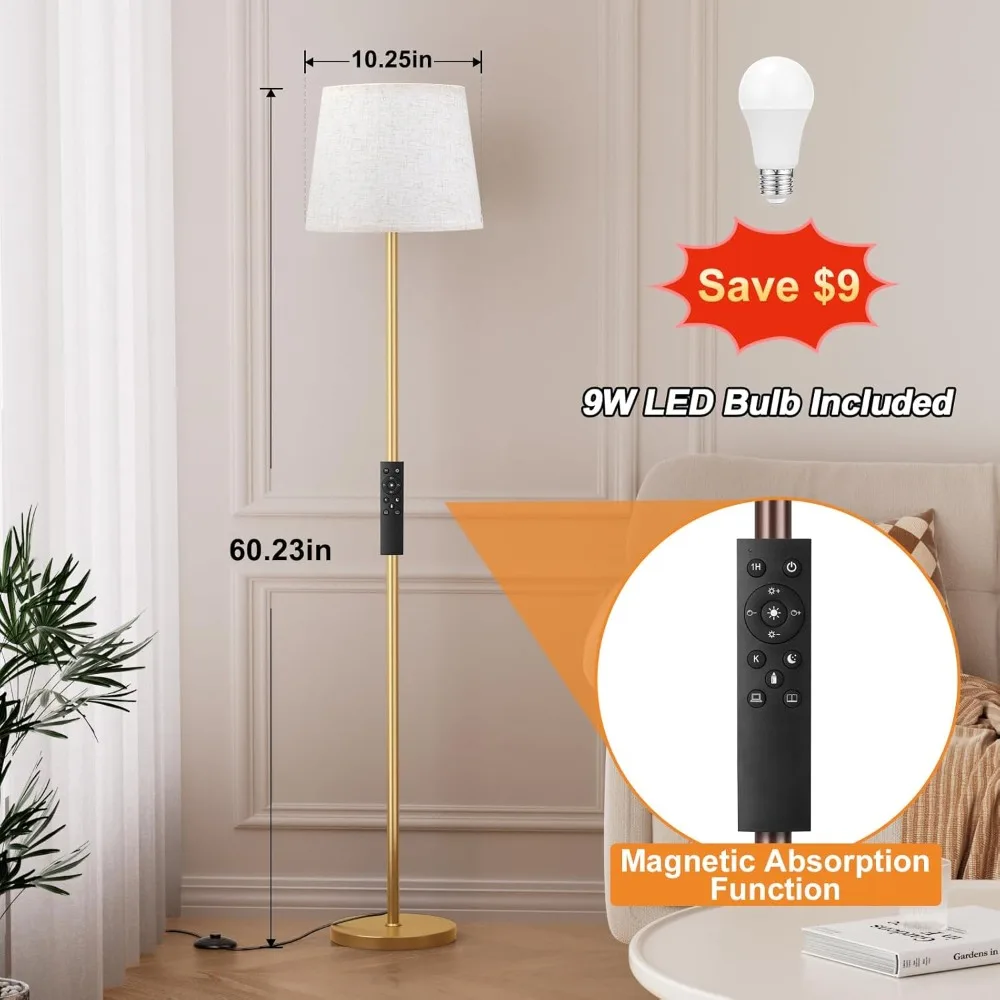
Is LED Technology the Future of All Lighting Applications?
The lighting industry has unmistakably shifted toward LED technology, with market penetration continuing to grow across virtually all sectors. Current market analysis shows LED technology capturing over 80% of new lighting installations globally, with projections suggesting this will reach 90% within a few years.
This transition has occurred faster than many industry experts predicted, driven by rapidly improving performance and decreasing costs. The efficiency gap between LED and traditional technologies continues to widen as researchers develop new semiconductor materials and manufacturing techniques.
However, some limitations remain. For certain specialized applications requiring extremely high-intensity point sources or very specific spectral outputs, traditional arc lamp technology still offers advantages that LED alternatives haven’t fully matched. These niche applications represent a shrinking percentage of the overall lighting market.
Innovation continues in both technologies. Advanced arc lamp designs have improved efficiency and lifespan, though they still lag behind LED performance. Meanwhile, LED technology continues advancing in areas like spectral quality, output consistency, and specialized applications.
For most residential, commercial, and industrial applications, LED technology now represents the clearly superior choice based on performance metrics, economic considerations, and environmental impact. The remaining question isn’t whether LED technology will dominate the lighting landscape, but rather how quickly the transition will complete across all sectors.
Those interested in staying ahead of lighting trends might explore our collection of modern arc floor lamps featuring the latest in LED technology and design innovation.
Common Questions About LED and Arc Lamp Technologies
Can LEDs completely replace all arc lamp applications?
While LEDs have replaced arc lamps in most general lighting applications, a small number of specialized uses still exist where traditional arc lamps retain advantages. These include certain scientific instruments calibrated specifically for arc lamp spectra, some high-end film projectors, and a few legacy medical devices. However, even in these areas, LED alternatives continue to improve and narrow the performance gap.
How do I properly dispose of arc lamps containing mercury?
Arc lamps containing mercury should never be disposed of in regular trash. Many communities offer household hazardous waste collection events or permanent facilities. Some retailers and lighting suppliers also offer take-back programs. Contact your local waste management authority for specific guidelines in your area. Always handle broken arc lamps with caution to avoid mercury exposure.
What is the actual lifespan difference in real-world conditions?
In typical use, LED lighting systems last 5-10 times longer than equivalent arc lamp systems. While manufacturer ratings might show LEDs lasting 25,000-50,000 hours versus 5,000-20,000 hours for arc lamps, real-world factors like switching frequency, ambient temperature, and electrical quality influence both technologies. LEDs particularly outperform in applications with frequent on/off cycling, which dramatically shortens arc lamp life.
Are there health concerns with either lighting technology?
Traditional arc lamps can pose several health concerns if improperly used, including UV radiation exposure and potential mercury contamination if broken. Quality LED lighting has fewer direct health concerns, though poorly designed LED products with significant flicker or improper blue light content can potentially cause eye strain or disrupt sleep patterns. Choosing quality products designed to appropriate standards minimizes these concerns.
What are the latest developments improving LED performance?
Recent LED advances include improved phosphor technologies yielding better color rendering, reduced costs through manufacturing innovations, and higher efficiency designs approaching theoretical limits. Particular progress has occurred in tunable white technology, allowing adjustment from warm to cool light, and in specialized wavelengths for horticultural, health, and wellness applications. Miniaturization continues to enable new form factors previously impossible with traditional lighting technologies.
For practical examples of how LED technology enhances living spaces, our guide to contemporary interiors with LED arc lamps showcases real-world applications and design possibilities.
Additional Considerations for Specialized Environments
Beyond standard performance metrics, specialized environments create unique challenges for lighting technologies that influence the choice between LED and traditional arc lamps.
Temperature Extremes
In extremely cold environments (below -4°F/-20°C), traditional arc lamps struggle with starting and achieving full brightness. Many require special ballasts or starters for cold weather operation. LEDs, in contrast, actually perform better and more efficiently in cold temperatures, making them ideal for refrigerated spaces, cold storage, and outdoor winter applications.
Hot environments present different challenges. While arc lamps tolerate high ambient temperatures, they add significant heat to already hot spaces. LEDs require proper thermal management in hot environments, but their lower heat generation makes them preferable for enclosed fixtures and hot industrial settings.
High Humidity and Wet Locations
Both technologies can be designed for wet locations, but LEDs have inherent advantages. With no glass bulb that can accumulate condensation or filaments that can corrode, properly designed LED fixtures offer superior reliability in high humidity. Marine applications particularly benefit from LED’s resistance to vibration and corrosion.
Medical and Healthcare Settings
Healthcare environments present unique lighting requirements. Traditional arc lamps’ ultraviolet emissions can be problematic in dermatology settings, while their infrared radiation can affect temperature-sensitive procedures and equipment. LED’s precise spectral control allows for specialized medical lighting that can enhance visibility of specific tissues, improve diagnostic accuracy, and reduce eye fatigue during lengthy procedures.
Museum and Art Gallery Lighting
Preservation of light-sensitive artifacts requires careful lighting selection. Traditional arc lamps emit significant UV and IR radiation that can damage artwork and artifacts. Even with filters, these wavelengths must be managed carefully. LED lighting’s naturally low UV and IR output, combined with precise spectrum control, makes it increasingly the standard for museum and gallery applications where conservation is paramount.
For specialized lighting needs with exacting standards, our black arc floor lamp collection offers designs that combine aesthetic appeal with technical performance suitable for various environmental conditions.

